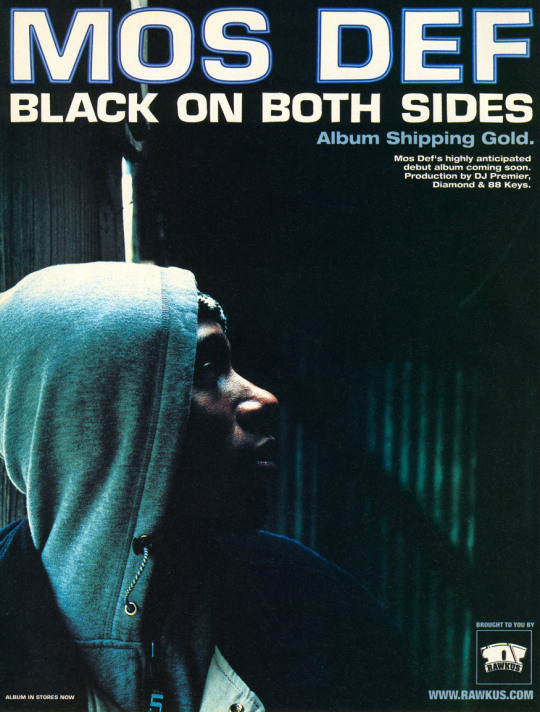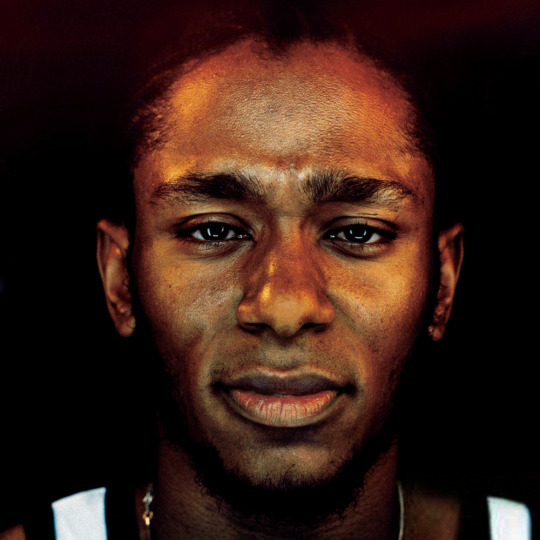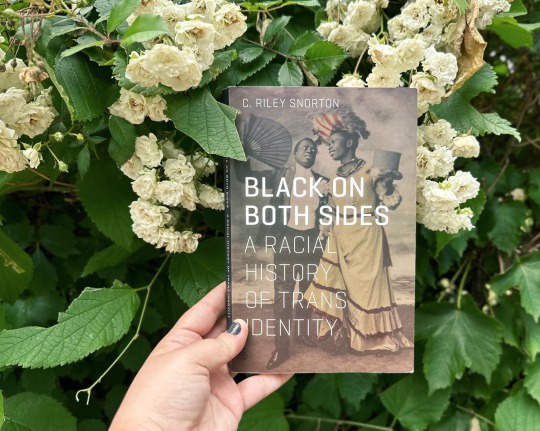#black on both sides
Explore tagged Tumblr posts
Text


October 12, 1999: Mos Def released his solo debut album Black on Both Sides.
September 6, 2024: His daughter Laila! is releasing her debut album Gap Year!
1K notes
·
View notes
Text

Today in Hip Hop History:
Yasiin Bey aka Mos Def released his debut album Black On Both Sides October 12, 1999
#today in hip hop history#todayinhiphophistory#hiphop#hip-hop#hip hop#history#music#hip hop music#hip hop history#rap#hip hop culture#music history#mos def#yasiin bey#black on both sides#1999#99#brooklyn
494 notes
·
View notes
Text


October 12, 1999: Mos Def released his solo debut album, ‘Black on Both Sides.’
September 6, 2024: His daughter Laila! releases her debut album ‘Gap Year!’
#most def#Laila#gap year#black on both sides#my posts#theblvcksupreme#posts#music#album covers#album#albums#300#300+
333 notes
·
View notes
Photo

484 notes
·
View notes
Text

the subtitle of this book is a bit misleading - this is really an academic text covering cultural theory rather than a true history - but it was a great workout for my brain
#black on both sides#c riley snorton#black history#trans history#nonfiction#library book#booklr#books#book#reading#mine#bookish#bookblr#read
13 notes
·
View notes
Text
Black on Both Sides: A Racial History of Trans Identity by C. Riley Snorton

The story of Christine Jorgensen, America’s first prominent transsexual, famously narrated trans embodiment in the postwar era. Her celebrity, however, has obscured other mid-century trans narratives—ones lived by African Americans such as Lucy Hicks Anderson and James McHarris. Their erasure from trans history masks the profound ways race has figured prominently in the construction and representation of transgender subjects. In Black on Both Sides, C. Riley Snorton identifies multiple intersections between blackness and transness from the mid-nineteenth century to present-day anti-black and anti-trans legislation and violence.
Drawing on a deep and varied archive of materials—early sexological texts, fugitive slave narratives, Afro-modernist literature, sensationalist journalism, Hollywood films—Snorton attends to how slavery and the production of racialized gender provided the foundations for an understanding of gender as mutable. In tracing the twinned genealogies of blackness and transness, Snorton follows multiple trajectories, from the medical experiments conducted on enslaved black women by J. Marion Sims, the “father of American gynecology,” to the negation of blackness that makes transnormativity possible.
Revealing instances of personal sovereignty among blacks living in the antebellum North that were mapped in terms of “cross dressing” and canonical black literary works that express black men’s access to the “female within,” Black on Both Sides concludes with a reading of the fate of Phillip DeVine, who was murdered alongside Brandon Teena in 1993, a fact omitted from the film Boys Don’t Cry out of narrative convenience. Reconstructing these theoretical and historical trajectories furthers our imaginative capacities to conceive more livable black and trans worlds.
#black on both sides#black on both sides: a racial history of trans identity#c. riley snorton#transfem#transmasc#trans book of the day#trans books#queer books#bookblr#booklr
80 notes
·
View notes
Text

Mos Def - Black On Both Sides (1999)
6 notes
·
View notes
Audio
Mos Def - Speed Law
79 notes
·
View notes
Text
10 Books to Add to Your TBR 2024 Edition Part 2
Most years I put out a list of books I greatly enjoyed from the first half of the year some time in June. This year, I decided to do it early because, besides needing a blog for this week, I have read a lot of good books lately, so I’m thinking of making this something I do more than twice a year (and often forget to do in December). The books listed below are not in any order of favoritism, but…
#5 star reads#a letter to the luminous deep#black on both sides#books#paladin&039;s grace#queer literature#reading#the dead cat tail assassins#the heroine&039;s journey#the house of red balconies#the pairing#waiting for the flood#when among crows#you should be so lucky
3 notes
·
View notes
Text

Today in Hip Hop History:
Yasiin Bey aka Mos Def released his debut album Black On Both Sides October 12, 1999
#today in hip hop history#todayinhiphophistory#hiphop#hip-hop#hip hop#hip hop music#hip hop history#music#history#hip hop culture#music history#mos def#yasiin bey#black on both sides#album#emcee#mc#rap#rapper#brooklyn#1999
630 notes
·
View notes
Text

Oof! Ok, so I admit that while I do read a lot of nonfiction, Black on Both Sides: A Racial History of Trans Identity was a little deeper into academic theory than I expected or was prepared for. There were large parts where it was a difficult book for me to follow. I think the subject matter is exciting enough and we're starved enough for good trans histories and nonfiction by people of color, that this one is being passed around as being more accessible than it is, to no fault of the author or publisher.
Still, I think I gained a sense of the argument and I gained a really good look into some histories of Black cross-dressers and trans people over time, which was my goal on picking up this book. I also gained some, if not nearly as much as author C. Riley Snorton aimed for, understanding of the linkages between Blackness and transness, particularly when it comes to the idea of "passing" in society and how it inherently questions the very binary and structure of what you're passing into—for example, how a slave who looks white could challenge the very premise of racial superiority and obvious difference, or how a person who lives as a woman and is accepted as one but has not had surgery to change their genitals challenges the premise of a cis, hetero patriarchy.
One fun note also was that I realized that Snorton wrote this book at Cornell University, and is now at University of Chicago. I began reading it while visiting a friend for their wedding in Ithaca, and finished it at home in Hyde Park, so this was a fun coincidence.
#black on both sides#c. riley snorton#nonfiction books#queer theory#trans history#pride reads#my book reviews
31 notes
·
View notes
Text

26 notes
·
View notes
Text
30 Days of Literary Pride 2024 - June 12

Black on Both Sides: A Racial History of Trans Identity - C. Riley Snorton
4 notes
·
View notes
Text

THE DEEP END: Black on Both Sides
The Deep End is a series where I take a comprehensive look at albums, from lyrical themes to personal takeaways. For my top 5, favorite lyrics, and trivia on Black on Both Sides, check it out here! For my reflections on other albums, be sure to check out my Deep End tag.
In the dusk of 1999, an artist then known as Mos Def bestowed his solo debut upon the world. With a look out onto the horizon of the new millennium, the artist showcases his range as well as his grievances with the present and forewarnings about the future. All wrapped in love— of self, of culture, of Black people— he explores topics of cultural appropriation, political corruption, and hopes for himself and his people. It is a glimmer of realism and optimism that adds to the landscape of lyricists offering a counter to the growing commercialism of Hip-Hop at the time. And even so, it is a standout amongst its peers. Happy 25th anniversary to this album!

At a time when rap is more commercialized than ever before, Black on Both Sides is an album less concerned with countering the “Bling-Bling” flooding the market and more concerned with cultural preservation. For years, I thought the former, but now that I’m older- 25, just like Yasiin Bey was in this era- I see it for the rallying cry it is. In 17 tracks, Black on Both Sides:
🤘🏾 reclaims and highlights rock music by calling out culture vultures of the past and the then-current while spotlighting the likes of Bad Brains, Chuck Berry, Fishbone, Nina Simone, Little Richard, and more.
💰 rings the bell that informs the current (and subsequently the future of) Black people on sociopolitical happenings like corruption in the interest of corporate greed & at the detriment of Black people’s health and wellbeing — New World Water & Mathematics — and the problems faced in socioeconomic mobility as a Black man — Mr. Nigga.
🏠 honors the borough that made him and fallen angels — Brooklyn — as well as the people who shaped him — UMI Says — and the ancestors before him — Know That.
Often categorized as a conscious, progressive rapper, a then 25 year old Yasiin Bey pushes back on this notion (and still does). “Hip-Hop is goin’ where we’re goin’.”
Boxing in Black music, especially hip-hop, is counterproductive as everything is everything and synergy is a must. The bling shines a light on the underground and the underground propels the culture. It IS the culture in its rawest form. It IS the trend at its most rooted, and Bey explores all colors of the wheel that is Hip-Hop. Just like Hip-Hop itself, he pulls from jazz, afrobeat, rock n’ roll, and more. BOBS is a love letter to Black people, an alarm to pay attention to challenges facing the diaspora, a moment to honor those we’ve lost, those who’ve been overlooked, those who’ve laid the soil from which we grow. Refusing to be caged by other people’s perception of what Hip-Hop is or should be, Bey makes a bold proclamation for the sake and protection of Black art and Black lives. And he also sticks a flag in the ground, letting it be known that his artistry and personhood aren't to be defined by anyone but himself.

5 notes
·
View notes
Text

Mos Def - Black on Both Sides (1999)
15 notes
·
View notes
Photo

Black on Both Sides
#Mos Def#Vinyl#Classic#50mm#hip hop#nikon#black on both sides#Nikon D700#Aesthetic#photographers on tumblr#spring#nostalgic
8 notes
·
View notes